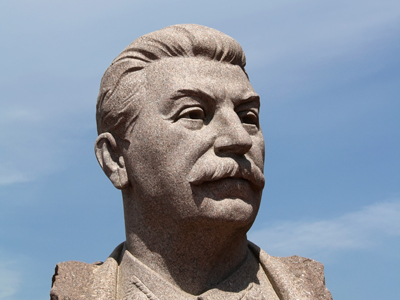
Russia: Stalin's Seizure Of Power, 1924-1929
This World History quiz is called 'Russia: Stalin's Seizure Of Power, 1924-1929' and it has been written by teachers to help you if you are studying the subject at senior high school. Playing educational quizzes is one of the most efficienct ways to learn if you are in the 11th or 12th grade - aged 16 to 18.
It costs only $12.50 per month to play this quiz and over 3,500 others that help you with your school work. You can subscribe on the page at Join Us
Joseph Stalin seemed at first unlikely to win power after Lenin's death in 1924. But he had secured a powerful position in the Party, and was able to discredit his rivals one by one. By 1929 Stalin reigned supreme, and, once he was in power, he was now ready to make radical changes in economic policy.
Ready for more?
not all...
quizzers. Try to win a coveted spot on our Hall of Fame Page.







